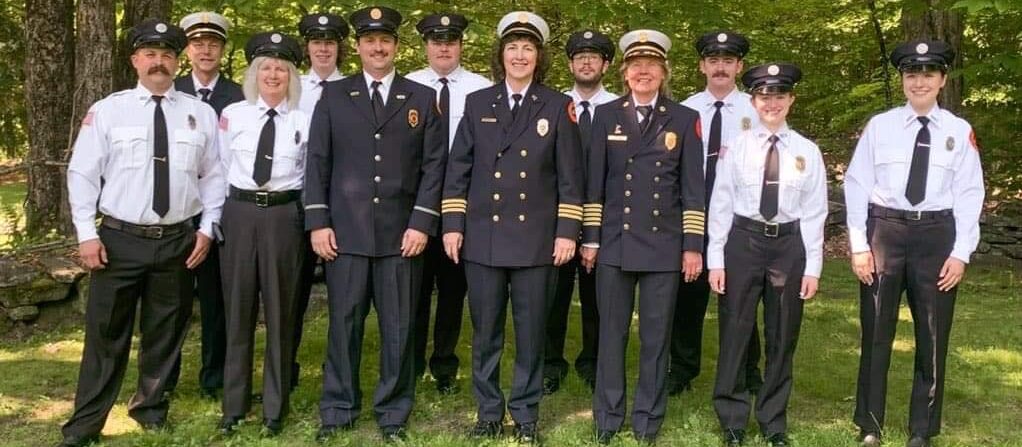Union-News (Springfield, MA)
Author: FRED CONTRADA
CHESTERFIELD, MA – Emergency Medical Technicians Tom Oborne and Kammille Terstegge remember exactly where they were when they got the call back on that Saturday in April.
They had attended church in Amherst and were on their way to a benefit concert for battered women when the fire engine sped past them going over the Notch on Route 116. Oborne instinctively switched his police scanner on.
“The next thing we heard was the dispatcher calling the Chesterfield Rescue Team for a water rescue in the gorge,” he recalled.
Thus began a series of events that would literally turn their roles as EMTs upside down and forever change the way Oborne and Terstegge look at the business of rescuing people.
Student and teacher
The two had been together since Terstegge took a wilderness rescue course Oborne was teaching with the Hilltown Mountain Rescue Group a few years ago. They quickly discovered that they shared a love of the outdoors as well as an interest in emergency medical response. Terstegge eventually moved into Oborne’s cabin on Damon Pond in Chesterfield where they planned their marriage while answering calls together for Goshen Ambulance, a volunteer service that serves Goshen, Chesterfield and Williamsburg.
When the call came for the rescue team that April 17, the couple immediately gave up their concert plans.
“I knew the only way to get hold of our team was through two of us who have portable radios,” Oborne said, “and the other one was out of town at the time.”
Dropping off a passenger in Amherst Center, Oborne and Terstegge turned their Isuzu Trooper around and headed back down 116 towards Route 9. The Hilltown Mountain Rescue Group had staged demonstration rescues in Chesterfield Gorge and if there was an emergency there now, Oborne knew it would be someone’s best hope. Oborne fixed his red emergency light to the dashboard and turned his siren on as the light turned green. He was still accelerating when he saw the red car turning left into the intersection.
“I swerved to avoid him and heard a loud bang,” he said.
The Isuzu Trooper flipped over on its roof, skidded into a curb and then rolled twice, end-over-end, before coming to rest upside down.
“I understood what it felt like to be inside a washing machine,” Terstegge said.
Pinned upside down, her legs on the dashboard and her head forced down on her chest, Terstegge got the worst of it. She had grabbed the outside roof-bar to brace herself and now her hand was caught and losing feeling as the weight of the jeep started to settle on it. Fearful of losing her ability to play the violin, she freed her fingers with a mighty effort, suffering a possible dislocated wrist.
Although conscious throughout the incident, both Oborne and Terstegge were stunned.
“The windows were shattered,” he said. “We had glass in our ears, glass in our noses, glass in our hair.”
Amherst had two ambulances tied up on other calls at the time and the couple waited half an hour for the backup to arrive. Meanwhile, Terstegge, who is hypoglycemic, was burning up her body sugar under stress and starting to feel faint.
“I knew she was sounding week,” Oborne said. “I had some glucose in my kit and I gave it to her.”
Thieves arrive
Meanwhile, several vehicles had stopped at the accident scene and the couple had glimpses of feet and faces as people came over to help. Oborne remembers seeing a hand reach under the hood and remove the red emergency light that had fallen through the shattered windshield. It was the last he would see of it. Other pieces of emergency gear had been strewn along the road and the couple would later find several hundred dollars worth of equipment missing from the scene.
Although they now deplore the thievery, at the time Oborne and Terstegge were simply interested in getting out of the jeep. Fortunately, one of the first people to stop was Ron Roberts, an EMT from Cummington whom Oborne had trained. When the ambulance arrived, Roberts helped strap Oborne onto a stretcher.
“I’ve been waiting a long time to backboard you,” Roberts told him in EMT lingo.
Terstegge’s extrication was trickier. In addition to being pinned by the roof, her long hair was caught in the headrest. Oborne managed to yank it free but the sensation of being trapped stayed with both of them.
“That was one of the first things we talked about,” she said. “There were a lot of things we knew about that suddenly took on new importance. It’s a fearful thing when your head’s coming out and your hair’s in the way.”
Physically, the pair escaped the accident remarkably intact. Oborne suffered bruised ribs, Terstegge whiplash, a sprained wrist and knee and a month-long headache. The driver of the other car was not charged. The Chesterfield call, which was prompted when a hiker spotted a capsized canoe, turned out to be a false alarm when police discovered the canoeists had swum to safety upstream.
None of the injuries prevented the couple’s May wedding on the pond, with 250 people in 1920s costumes and a roaring bonfire at night. The emotional impact of the accident was still in evidence, however, when Oborne and Terstegge answered their next call together two weeks later.
“It was like my brain didn’t work,” she said.
The couple has since worked through that and find emergency rescue conducive to marital harmony.
“It makes it easier going out together when you get a call at 2 o’clock in the morning,” Terstegge said.
